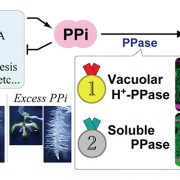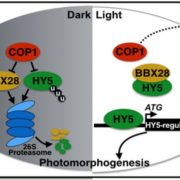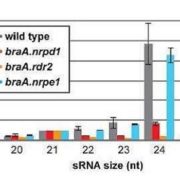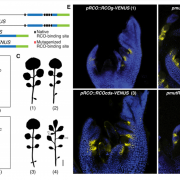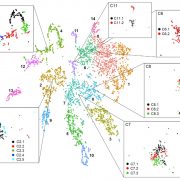Opinion: Information processing and distributed computation in plant organs ($) (Trends Plant Sci)
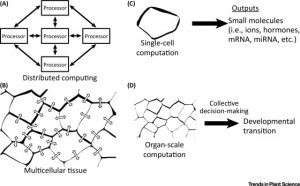 The great strides we’ve made in understanding how plants perceive their environment, from light to pathogens to nutrients, haven’t been matched with an understanding of what they do with all that information; how do so many inputs get integrated into a single or few responses? And how does the information processing integrate spatially across the organism? To address these questions, Bassel applies a computational perspective to plant development. He describes how individual cells in a plant provide a distributed computing architecture, providing robustness. He further explores this model by describing the cell-by-cell vernalization response (silencing of FLC) that takes place at the shoot apical meristem, and the spatially separate responses to ABA and GA that contribute to the breakage of seed dormancy. He also observes that the plasmodesmata connections between cells are switchable, allowing distributed circuits to be dynamically reconfigured. Finally, he observes that plants provide a novel model for bio-inspired computing, and that advances in understaning computing networks can help us to better understand and reprogram plants. (Summary by Mary Williams) Trends Plant Sci. 10.1016/j.tplants.2018.08.006
The great strides we’ve made in understanding how plants perceive their environment, from light to pathogens to nutrients, haven’t been matched with an understanding of what they do with all that information; how do so many inputs get integrated into a single or few responses? And how does the information processing integrate spatially across the organism? To address these questions, Bassel applies a computational perspective to plant development. He describes how individual cells in a plant provide a distributed computing architecture, providing robustness. He further explores this model by describing the cell-by-cell vernalization response (silencing of FLC) that takes place at the shoot apical meristem, and the spatially separate responses to ABA and GA that contribute to the breakage of seed dormancy. He also observes that the plasmodesmata connections between cells are switchable, allowing distributed circuits to be dynamically reconfigured. Finally, he observes that plants provide a novel model for bio-inspired computing, and that advances in understaning computing networks can help us to better understand and reprogram plants. (Summary by Mary Williams) Trends Plant Sci. 10.1016/j.tplants.2018.08.006



